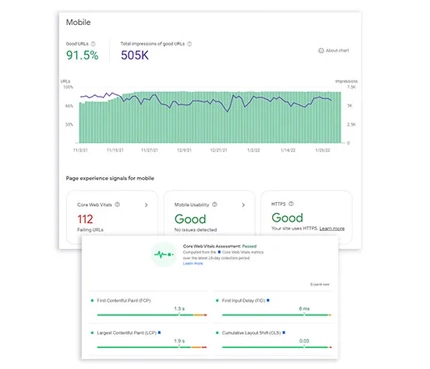
Advanced On-Page SEO Techniques
Elevating Your SEO Strategy with Advanced Techniques-
As you delve deeper into the world of On-Page SEO, employing advanced techniques can significantly boost your website's visibility and user engagement. Here, we explore some of the cutting-edge strategies that can set your site apart.
Schema Markup: Enhancing Search Engine Understanding
In the advanced realm of On-Page SEO, several techniques go beyond basic optimization to enhance your website’s interaction with search engines and users alike. One of the most impactful is the use of Structured Data through schema markup. This technique allows you to provide rich, contextual information to search engines, enhancing your search result snippets with detailed information like product ratings, event dates, or recipe ingredients. By showcasing richer snippets in search results, structured data can significantly improve your site's click-through rates. Alongside, Semantic HTML plays a vital role. By using proper HTML tags to structure your content semantically, such as accurate headings (H1, H2, etc.) and section tags like <article> and <aside>, you categorize content types more effectively, aiding search engines in understanding and ranking your content.
Complementing these, Microformats and Microdata offer lightweight alternatives to schema markup, providing specific context to your content, particularly for annotating people, places, organizations, and other entities. These can enhance search engine comprehension and potentially lead to richer search snippets. An effective internal linking strategy is another cornerstone of advanced On-Page SEO. By creating a well-structured network of internal links with accurately descriptive anchor texts, you not only improve site navigation but also reinforce keyword targeting and contextual relevance, which are crucial for search engine understanding.
Social Media Integration: Leveraging Social Signals
Integrating social media into your website holds significant importance in amplifying your content's reach and engagement. This integration creates an active, dynamic bridge between your site and social platforms, offering more than just a presence - it opens up new pathways for traffic and interaction. Incorporating social sharing buttons on key content pages, like blog posts and product descriptions, invites users to share your content, thus extending its reach. These buttons, when seamlessly blended with your site’s design and customized with relevant hashtags or brand handles, encourage active participation from your audience.
Embedding social media posts directly into your website can effectively bring a piece of your social media life to your visitors. This approach not only showcases your most engaging content but also fosters user interaction and community building. Cross-promotion of offers and announcements between your site and social media platforms creates a cohesive marketing strategy. Moreover, encouraging user-generated content through unique hashtag campaigns or interactive challenges can significantly boost community engagement, adding a layer of authenticity and belonging. This user involvement, showcased through reviews and testimonials on your site, builds trust and reflects your brand’s dedication to customer satisfaction.
Integrating live social media feeds keeps your website content dynamic and fresh, offering visitors a window into your brand's social activities. By merging these social media strategies with your website, you not only enhance user engagement but also strengthen your overall online presence, creating a vibrant and interactive digital environment that resonates with both current and potential customers.
Advanced Technical Optimizations
Optimization for Page Speed and Mobile-First Indexing are also critical. As Google prioritizes mobile-first indexing, ensuring your website is optimized for mobile devices, with responsive design or dedicated mobile sites, is essential. Tools like Google PageSpeed Insights can be instrumental in identifying and rectifying bottlenecks, implementing techniques like image compression, browser caching, and code minification to enhance loading times. Additionally, focusing on Accessibility Best Practices not only improves SEO but also ensures inclusivity, making your site accessible to users with disabilities.
Lastly, Voice Search Optimization and Core Web Vitals are emerging areas in On-Page SEO. With the rise of voice search, optimizing your content for natural language queries and using conversational language becomes crucial. Simultaneously, Google's core web vitals metrics – Largest Contentful Paint (LCP), First Input Delay (FID), and Cumulative Layout Shift (CLS) – demand attention to deliver a fast, stable, and interactive user experience. Tools like Lighthouse can aid in measuring and improving these vitals. For those targeting global audiences, International SEO through hreflang tags and localized content adaptation is key to success in different search markets.
Implementing these advanced techniques requires a balance between technical optimization and maintaining a high-quality user experience, ensuring that your website not only ranks well but also satisfies and engages your visitors.